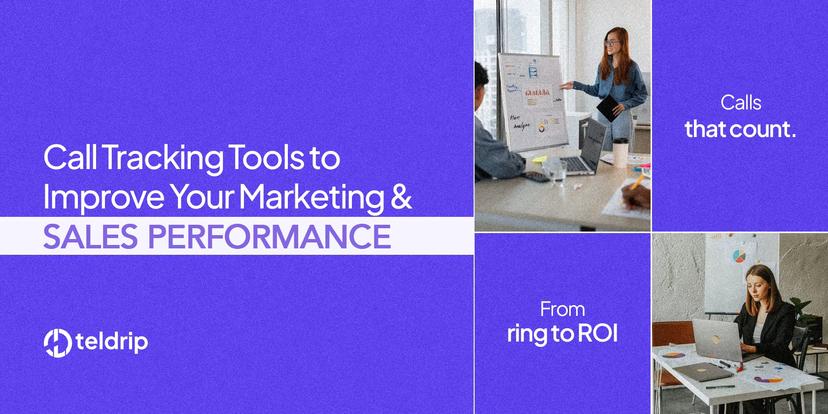What is a Customer Lifetime Value? A Complete Guide

The revenue a buyer can provide to a business, through purchases, is the customer lifetime value. Put another way, it is the sum of total earnings from a buyer on the services/products of a company. Additionally identified as CLTV or CLV, this metric is of 2 types. Through historical and predictive CLVs, one can understand the amount spent as well as expected. While calculating the value, the influence of several factors matters. In case the sum is low, it is possible to improve it through solutions like call tracking. However, remember to select the best call tracking software for the maximum impact.
What is Meant by Customer Lifetime Value?
Briefly, customer lifetime value is a useful measurement of the income from a customer that a business can earn. The metric works for the duration for which that customer is active. As a key statistic, it shows the total net profit that an organization expects to yield from a buyer throughout his/her terms with it.
-
CLV or CLTV indicates the extent to which customers are valuable to businesses.
-
This value holds importance in relation to the purchases made by buyers.
-
This metric accounts for complete customer relations and the durations of these.
-
Moreover, initial/repeat purchases are taken into consideration.
Main Types of CLV
CLV is of 2 main types. Historical customer lifetime value is the primary kind. It signifies the amount an existing consumer has spent on a brand’s products or services. The secondary kind is predictive customer lifetime value. It hints at how much consumers could invest in these services or products.
Historical CLTV
The historical CLTV, in specific, is the sum calculated as per a consumer’s actual buys. It is dependent on 2 factors. One of these is the span of the relationship or terms so far. The other is the real amount spent. This value is important to identify the amounts involved. Moreover, it offers insights relating to the spending practices of consumers.
Predictive CLV
Typically, predictive customer lifetime value shows the amount a buyer is likely to spend on a business or brand. Therefore, it is reliant on the guessed or projected behavior of the individual in the future.
-
This type of value utilizes the average sum a brand believes a buyer will spend.
-
Further, it takes into account the estimated length of the relationship.
-
Note that predictive CLV may not be accurate.
-
Despite that, it can work as a crucial estimate for a brand’s supposed income.
Which Factors can Affect CLTV?
There are 3 factors that can affect or influence CLTV or customer lifetime value. These are also the main variables involved in the equation of this financial metric.
-
One of the factors is how often a customer makes a purchase.
-
The other one is the amount of money that he/she spends on every purchase.
-
For how long consumer relationships with businesses last is the third determinant.
Bear in mind that all of these variables differ in accordance with others. These can include the industry in which a business operates, sales, etc. Another significant factor is the application of marketing strategies for ensuring returning customers.
Which Metrics are Needed to Calculate CLTV?
A brand or business requires 3 metrics for the calculation of CLTV or customer lifetime value. These comprise average spending, frequency of spending, and the length of relationships.
Average Spending
To calculate customer lifetime value, average spending is a vital metric. In simple words, it is the total of the revenue that has been attributed to a buyer. It denotes the average amount he/she spends on every purchase. It can include regular, major one-off, and skipped buys in a year. However, these exclude discounts and refunds.
Note: This spending is for a particular customer. It doesn’t include the average of all buyers.
Purchase Frequency
Going further in calculating CLV, the frequency of purchase matters. It is the number of times a consumer buys a brand's products or services. It is calculated on a yearly basis.
To demonstrate with an example, when a consumer shops every 3 months, the yearly buys are equivalent to 4. It is to note that every unit for the specific variable, i.e. weeks, months, and years, should match those in the length of the relationship on a weekly, monthly, and yearly basis.
Length of the Relationship
The third indicator, for the estimation of CLTV, is the length of the relationship between a business and a customer. Depending on how long it lasts, this value can be determined. Remember that it is estimated in years.
How to Measure CLV?
To measure CLV or customer lifetime value, a company should consider the total average revenue earned through a consumer. The total average profit is also important for the same. To obtain an in-depth analysis, breaking down the CLV of the company by quartile is helpful. Or, any other type of customer segmentation is preferable for this analysis.
Formula for Calculating Customer Lifetime Value
The CLV or CLTV is calculated by multiplying the average spend by the frequency of spending by the consumer’s lifetime. One can also understand the formula as:
CLTV = Average Spending * Spending Frequency * Customer Lifetime
Why is Customer Lifetime Value So Important?
CLTV is important for obtaining insights about buyers' behaviors. They can unfold different yet valuable information to brands or organizations. Through each piece of information, it becomes possible to enhance decision-making. Along with this, planning resources is easier.
For Targeting an Audience
It is significant to study customer lifetime value to target an audience with similar members. Consumers who share similar CLTVs can belong to a segment. The segmentation of customers can differ. This is dependent on its model which can be based on the spending practices of consumers and other factors.
-
The estimation of this value simplifies the audience to target.
-
By focusing on the audience, it can be attainable to increase its spending.
To Detect Behaviors to Improve CLV
A brand can track CLV to detect its level. On the basis of the same, it can identify the measures to implement to raise the average spending by a customer. They can also help in enhancing the frequency of purchases.
For instance, considering that the calculated customer lifetime value is low for a retail store, it will witness limited sales. A lack of offers, sales, discounts, etc., may lead to such an outcome. By introducing discounts and sales, purchases from buyers can be increased. Thus, CLTV can be improved.
-
While this is only one scenario, other occurrences/factors can affect this value.
-
They can lead to a decline in the financial metric.
-
Depending on the value, a brand can apply suitable measures.
-
Thus, the decline can be put an end to.
Increase Retention, Decrease the Churn Rate
For businesses to witness profitability, focusing on customer retention is crucial. In addition, churn rate is another factor that demands attention. Through customer lifetime value, they can concentrate on each of these. It can offer informative insights to understand how to retain customers. Those who are vulnerable to churning can be targeted to ensure better satisfaction.
ROI Measurement & Maximization
Through CLV, an organization can attempt to calculate and maximize ROI. For this, measuring the customer acquisition cost is vital. This financial metric can come into use to estimate CAC.
Through the ratio - CLV:CAC, the organization can obtain clarity regarding how much returns it is getting. Moreover, it can be clearer to track the CLV to recognize buyers who are the most important. Thus, the company can invest more in maintaining terms with them.
To Identify Consumer Loyalty & Satisfaction
Studying metrics such as customer lifetime value is an intelligent move for the detection of customers' loyalty and satisfaction. When a customer has a high CLTV, his/her satisfaction is majorly exhibited. Such an individual makes return purchases. Looking at his/her journey, a brand can determine which practices help in attaining customer satisfaction.
-
Keep in mind that satisfied customers are loyal too.
-
Repeat buys are an indication of their loyalty.
-
To maintain both aspects, brands can practice effective measures.
-
These measures can positively impact CLTV as well.
Tip: Giving preference to Voice of the Customer or VoC can offer higher satisfaction.
What is a Good CLV?
A CLV or CLTV is considered to be good when it is 3 times more than CAC or the customer acquisition cost. It further helps in knowing the sum of money a business spends on the growth of its consumer base. On the overall, when greater profitability is observed, customer lifetime value is positive.
Can Call Tracking Improve Customer Lifetime Value?
Call tracking can positively impact financial metrics such as CLV. In brief, it is an advanced solution that can enable businesses or enterprises to elevate their operations and enhance their customer understanding. Moreover, it is the top idea to improve customer services. As a result, CLV becomes high.
Impact of Call Tracking on CLTV
The functioning of call tracking, through certain software, involves the generation of various insights. It interprets on-call conversations. Then it yields insights regarding customers as well as their preferences and needs. These bits of information help businesses understand their audiences better. As they fulfill their requirements, customer satisfaction and loyalty are won, thereby improving CLTV.
-
Bear in mind that the choice of call tracking solutions can impact this overall process.
-
With solutions like Teldrip, businesses can ensure the best influence of customer lifetime value.
To Conclude
CLV is a crucial financial metric. It measures the income a consumer can invest in the offerings of a particular business. It can be determined as per its types, i.e. predictive and historical. Through a simple formula, this metric can be calculated. Remember that in case the value obtained is low, it can be enhanced through call tracking software.
About Author

Brian Harris
Sr. Content EditorBrian Harris is a leading expert in artificial intelligence and machine learning, with a focus on natural language processing and sentiment analysis. With a background in computer science, he has dedicated his career to exploring innovative ways to improve human-computer interaction. As a thought leader in the field, Brian showcases his expertise through engaging blog posts and industry insights, providing valuable guidance to readers to use Teldrip’s innovative solutions effectively.
Recent Posts

4 Call Routing Methods for Multiple Business Needs

Unlocking Pay Per Call Tracking: Top 5 Niches to Expand Your Revenues

Call Tracking Tools to Improve Your Marketing and Sales Performance

How will Intelligent Virtual Agents Redefine the Future of Financial Services in 2026?

Teldrip - 8 Steps to Run Your First Pay-Per-Call Campaign on Facebook




Comments (0)
Post a Comment